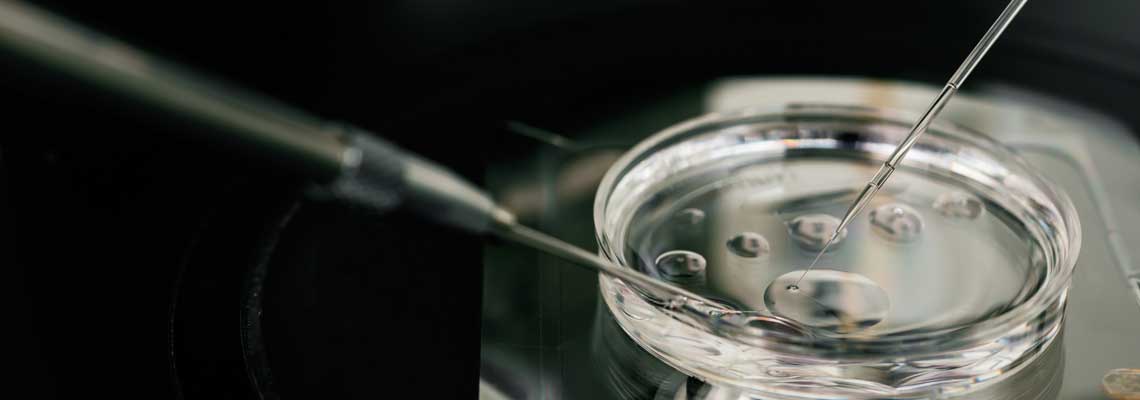In vitro maturation: Australian and Belgian scientists lead the way

Last week, Australian and Belgian scientists announced exciting results in the field of IVM (in vitro maturation of human eggs). IVM has been around for some time. The breakthrough comes from the development of culture medium containing growth factors that make IVM 50% more successful than in previous methods.
So what is IVM and how does it relate to the process of IVF (In Vitro Fertilization)?
To understand this development, you first need to know a little bit about how eggs are stored in the ovary and how IVF is practiced today.
How are eggs stored in a woman’s ovaries?
It may surprise you to know that a woman makes all the eggs she will use throughout her reproductive life when she herself is a baby in her own mother’s womb.
Most eggs are stored in a resting state, nestled within groups of nurturing cells called ovarian follicles. Every month after puberty, several follicles “wake up” and compete in a race to grow and mature. Each small follicle contains an immature egg. As the largest follicle grows, it sends hormone signals that cause smaller follicles to retreat and dissolve. In this way, the biggest follicle “wins the race” and the egg within it is released that month (ovulated).
How do doctors and scientists currently perform IVF?
IVF currently involves a woman using a series of injectable hormonal medications to allow several follicles (and the eggs contained within them) in each ovary to mature during her treatment. Principally, the hormone FSH (follicle stimulating hormone) is used to help eggs mature within a woman’s body, inside follicles within her ovaries. This part of the IVF process takes approximately two weeks. During that time, treatment progress is monitored by ultrasounds and blood tests. When the leading follicles reach a certain size, eggs are collected via a medical procedure. Mature eggs are then fertilized in the IVF laboratory and embryos formed can be transferred back to the woman’s womb to achieve a pregnancy, or frozen and stored for use in the future.
What is meant by IVM?
IVM involves collecting eggs from a woman’s ovary (for use in IVF) when their follicles are still small and eggs are still immature. Chemicals and growth factors are then applied to eggs in the laboratory to assist them to mature ”in vitro”, a process that takes 1-2 days. Only mature eggs are able to be fertilized and used for IVF.
Why might IVM be a good idea?
If doctors and scientists can develop the technique of IVM to be safely used in humans, it could significantly reduce the burden of IVF treatment for women. Firstly, it could eliminate or at least reduce the doses of hormone medication and number of injections a woman may be asked to use during her treatment. It would also reduce the length of time an IVF cycle might take. These two factors might predictably reduce the financial and emotional cost of IVF to patients, if safety and pregnancy success rates from the process were similar. If the burden of IVF treatment for women could be reduced, more women may choose to stay in treatment for longer and thereby ultimately be able to have more babies.
IVM would predictably be associated with a reduced risk of some of the rare but serious complications of IVF, including ovarian hyperstimulation syndrome (OHSS) and ovarian torsion. IVM may be a better option in the future to help women affected by polycystic ovarian syndrome with complex infertility.
How is IVM similar to standard IVF?
- Follicles are monitored by ultrasounds and blood tests
- Medications may be involved to stimulate the follicles to grow
- An egg collection procedure would still be needed
- Fertilization of eggs matured by IVM would still occur in the IVF laboratory
- Embryos would be cultured in vitro before being transferred back to the womb or frozen/stored for later use.
What are the downsides to IVM?
IVM is a new technology and it will take a long time before we have enough pregnancy outcome data in humans to know if it can be as safe or effective as standard IVF treatment.
There are already concerns that conventional IVF techniques are associated with slightly higher numbers of babies born with birth defects and other complex epigenetic or developmental risks. With IVM, although fewer medications are used, the egg spends a longer period of time outside the human body. Long term follow-up studies in humans will be needed to assess safety concerns.
IVM may predictably result in fewer eggs being collected in a treatment cycle than standard IVF, which may adversely affect pregnancy success rates per cycle.
When might IVM treatment become mainstream?
Trials are underway to study safety and pregnancy success rates from IVM. It is estimated by researchers that IVM using the methods reported may be available in clinical IVF laboratories in as little as three to five years from now.
Article by Dr Raelia Lew. Raelia is working with VARTA in 2016 as part of her certification in reproductive endocrinology and infertility from the Royal Australian and New Zealand College of Obstetricians and Gynaecologists (RANZOG).